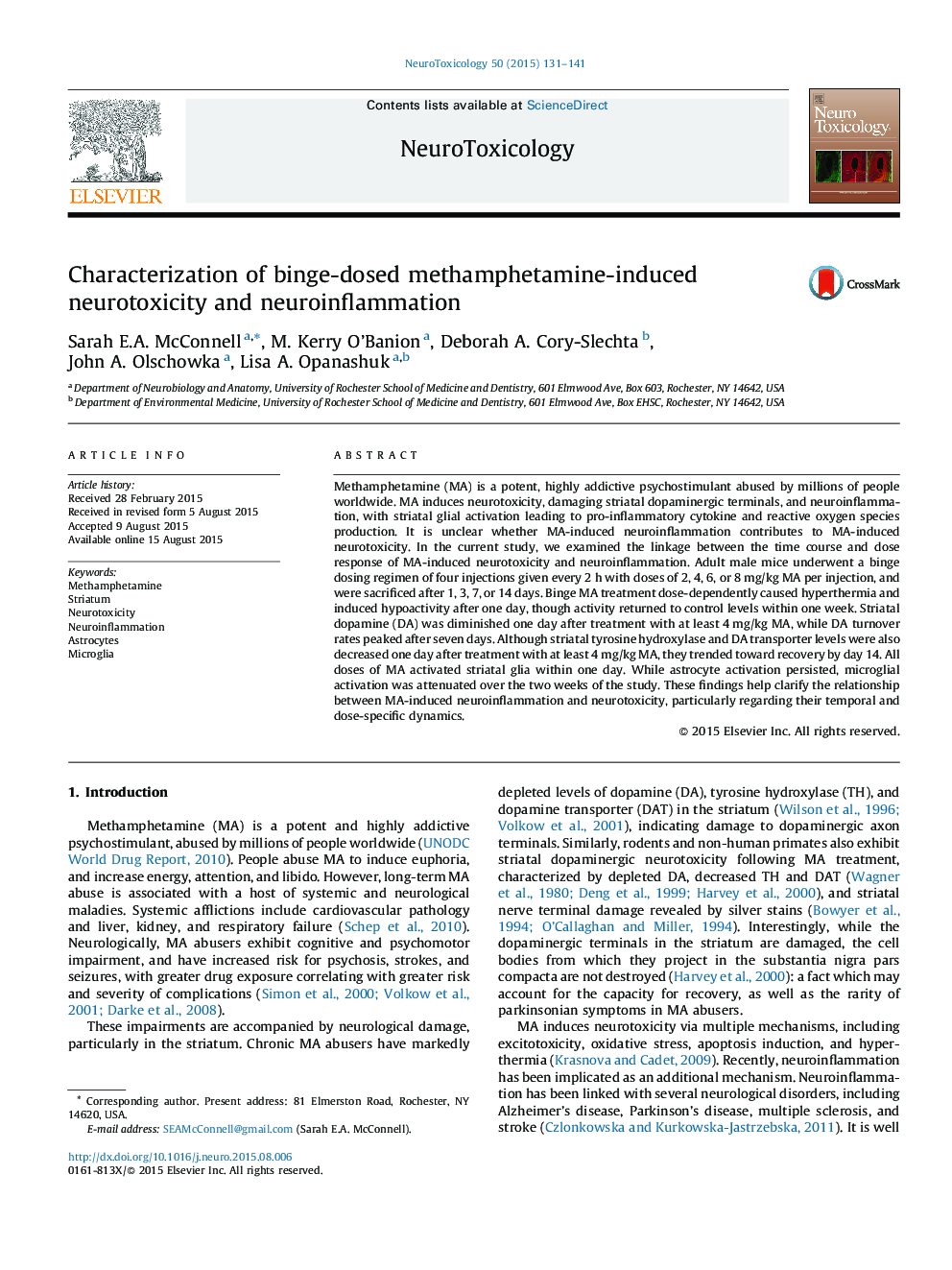| Article ID | Journal | Published Year | Pages | File Type |
|---|---|---|---|---|
| 2589501 | NeuroToxicology | 2015 | 11 Pages |
•Higher doses of MA rapidly decreased striatal DA.•Higher doses of MA rapidly and non-persistently decreased striatal TH and DAT.•A wide range of doses of MA activated striatal glia.•Astrocyte activation persisted, but microglial activation declined over 14 days.
Methamphetamine (MA) is a potent, highly addictive psychostimulant abused by millions of people worldwide. MA induces neurotoxicity, damaging striatal dopaminergic terminals, and neuroinflammation, with striatal glial activation leading to pro-inflammatory cytokine and reactive oxygen species production. It is unclear whether MA-induced neuroinflammation contributes to MA-induced neurotoxicity. In the current study, we examined the linkage between the time course and dose response of MA-induced neurotoxicity and neuroinflammation. Adult male mice underwent a binge dosing regimen of four injections given every 2 h with doses of 2, 4, 6, or 8 mg/kg MA per injection, and were sacrificed after 1, 3, 7, or 14 days. Binge MA treatment dose-dependently caused hyperthermia and induced hypoactivity after one day, though activity returned to control levels within one week. Striatal dopamine (DA) was diminished one day after treatment with at least 4 mg/kg MA, while DA turnover rates peaked after seven days. Although striatal tyrosine hydroxylase and DA transporter levels were also decreased one day after treatment with at least 4 mg/kg MA, they trended toward recovery by day 14. All doses of MA activated striatal glia within one day. While astrocyte activation persisted, microglial activation was attenuated over the two weeks of the study. These findings help clarify the relationship between MA-induced neuroinflammation and neurotoxicity, particularly regarding their temporal and dose-specific dynamics.
